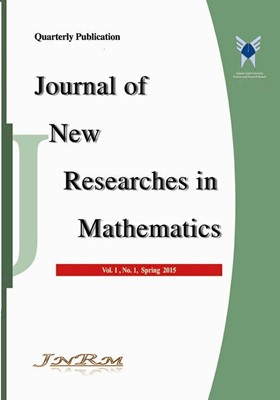A Log-Exp inverse Weibull Model for coherent systems with zero-truncated Poisson-Lindley components
Subject Areas : StatisticsMorteza Ghasemi Cherati 1 , Ezzatallah Baloui Jamkhaneh 2 * , Einolah Deiri 3
1 - Department of Statistics, Qaemshahr Branch, Islamic Azad University, Qaemshahr, Iran
2 - Department of Statistics, Qaemshahr Branch, Islamic Azad University, Qaemshahr, Iran
3 - Department of Statistics, Qaemshahr Branch, Islamic Azad University, Qaemshahr, Iran
Keywords: لگ نمایی-وایبل معکوس, حداقل فاصله کرامر-ون-میسز, ساختار موازی, پواسنلیندلی بریدهشده در صفر,
Abstract :
In this paper, we proposed two new distributions for a coherent system that is equipped with series or parallel components. The count of components is a zero truncated Poisson Lindley random variable. We considered the Log Exponential-inverse Weibull distribution and set it as the baseline distribution of the coherent system. Besides introducing two flexible distributions, named PL-LEIW1 and PL-LEIW2, with various-shaped failure function, the statistical properties and estimation approaches with the parametric and non-parametric context has been studied, comprehensively. Due to different probability density and failure functions, these two distributions based on series or parallel systems, can be fitted to different types of data sets. Different estimation methods of the parameters as maximum likelihood estimation, maximum product of spacing estimation, least squares estimation and Cramér-von-Mises minimum distance estimation are compared through the Monte Carlo simulation approaches. The applicability of the proposed distributions have been evaluated by two real data sets.
[1] C. Kuş, “A new lifetime distribution,” Computational Statistics and Data Analysis, vol. 51, pp. 4497–4509, 2017.
[2] V.G. Cancho, F. Louzada-Neto and G.D.C. Barriga, “The Poisson-exponential lifetime distribution,” Computational Statistics and Data Analysis, vol.55, no. 1, pp. 677–686, 2011.
[3] M. Goldoust, S. Rezaei, Y. Si and S. Nadarajah, “A lifetime distribution motivated by parallel and series structures,” Communications in Statistics-Theory and Methods, vol. 47, no. 13, pp. 3052–3072, 2018.
[4] Y. Sun., T. Sun, M.G. Pecht and C. Yu, “Computing lifetime distributions and reliability for systems with outsourced components: A case study,” IEEE Access, vol. 6, pp. 31359–31366, 2018.
[5] A.F. Hashem and S.A. Alyami, “Inference on a New Lifetime Distribution under Progressive Type II Censoring for a Parallel-Series Structure,” Complexity, vol. 11, pp. 1–18, https://doi.org/10.1155/2021/6684918, 2021.
[6] C. Li and X. Li, “Preservation of increasing convex/concave order under the formation of parallel/series system of dependent components, ” Metrika, vol. 81, no. 4, pp. 445–464, 2018.
[7] L. Xie, M.A. Lundteigen and Y. Liu, “Reliability and barrier assessment of series and parallel systems subject to cascading failures,” Proceedings of the Institution of Mechanical Engineers, Part O: Journal of Risk and Reliability, vol. 234, no. 3, pp. 455–469, 2020.
[8] A.L. Morais. and S.L.P. Ferrari, “A class of regression models for parallel and series systems with a random number of components,” Statistics, vol. 51, no. 2, pp. 294–313, 2017.
[9] L. Zhang and R. Yan, “Stochastic comparisons of series and parallel systems with dependent and heterogeneous Topp-Leone generated components,” AIMS Mathematics, vol. 6, no. 3, pp. 2031–2047, 2021.
[10] P.E. Oguntunde, A. Mundher, M.A. Khaleel, M.T. Ahmed and H.I. Okagbue, “The Gompertz Frأ©chet distribution: Properties and applications,” Cogent Mathematics and Statistics, vol. 6, no. 1, pp. 1–12, 2019.
[11] Z. Ahmad, “A new generalized class of distributions: properties and estimation based on type-I censored samples,” Annals of Data Science, vol. 7, no. 2, pp. 243–256, 2020.
[12] F. Jamal, M.A. Nasir, G. Ozel, M. Elgarhy and N. Mamode Khan, “Generalized inverted Kumaraswamy generated family of distributions: theory and applications,” Journal of Applied Statistics, vol. 46, no. 16, pp. 2927–2944, 2019.
[13] H. Pourreza, E. Baloui Jamkhaneh and E. Deiri, “A family of Gamma generated distributions: Statistical properties and applications,” Statistical Methods in Medical Research, vol. 30. no. 8, pp. 1850-1873, 2021.
[14] R. Tahmasbi and S. Rezaei, “A two-parameter lifetime distribution with decreasing failure rate,” Computational Statistics and Data Analysis, vol. 52, pp. 3889–3901, 2008.
[15] M. Aslam, C. Ley, Z. Hussain, S.F. Shah and Z. Asghar, “A new generator for proposing flexible lifetime distributions and its properties,” PLOS ONE, vol. 15, no.4, e0231908, 2020.
[16] E. Mahmoudi, A. Sepahdar and A.J. Lemonte, “Exponentiated Weibull-logarithmic distribution: Model, properties and applications,” arXiv:1402.2564v1, 2014.
[17] R.A. Khan and M. Mitra, “Estimation issues in the Exponential-Logarithmic model under hybrid censoring,” Statistical Papers, 10.1007/s00362-019-01100-3, 2019.
[18] M. Sankaran, “The discrete Poisson-Lindley distribution,” Biometrics, vol. 26, pp. 145–149, 1970.
[19] M.E. Ghitany, D.K. Al-Mutairi and S. Nadarajah, “Zero-truncated Poisson-Lindley distribution and its application,” Mathematics and Computers in Simulation, vol. 79, no. 3, pp., 279–287, 2008.
[20] J.J. Swain, S. Venkatraman and J.R. Wilson, “Least-squares estimation of distribution functions in johnson’s translation system,” Journal of Statistical Computation and Simulation, vol. 29, no. 4, pp. 271–297, 1988.
[21] T. Duchesne, J. Rioux and A. Luong, “Minimum cramér-von mises distance methods for complete and grouped data” Communications in Statistics-Theory and Methods, vol. 26, no. 2, pp., 401–420, 1997.
[22] R.C.H. Cheng and N.A.K. Amin, “Maximum Product-of-Spacings Estimation with Applications to the Lognormal Distribution,” [Technical report]. Cardiff, UK: Department of Mathematics, University of Wales, 1997.
[23] R.C.H. Cheng and N.A.K. Amin, “Estimating parameters in continuous univariate distributions with a shifted origin,” Journal of the Royal Statistical Society: Series B, vol. 3, pp. 394–403, 1983.
[24] E.T. Lee and J.W. Wang, “Statistical Methods for Survival Data Analysis,” Wiley, New York, 2003.
[25] H. Linhart and W. Zucchini, “Model Selection,” John Wiley, New York, USA, 1986.

